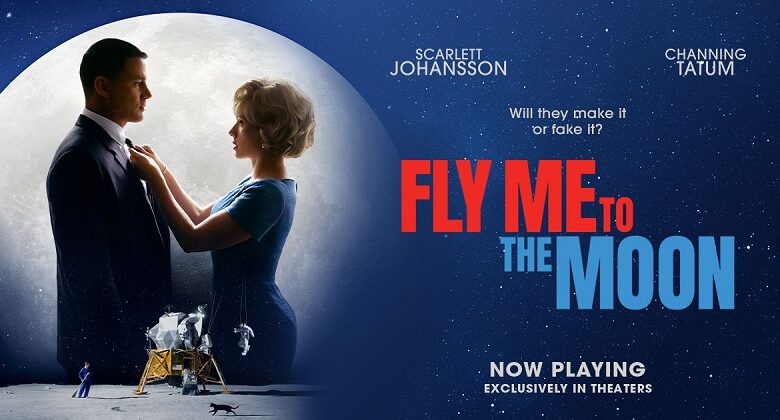Exploring “Fly Me to the Moon”: A Retro Rom-Com in Space

News Mania Desk/Agnibeena Ghosh/13th July 2024
Greg Berlanti’s latest venture, “Fly Me to the Moon,” aims to capture the nostalgic charm of 1960s America amidst the backdrop of NASA’s Apollo 11 mission. Despite its ambitions, the film struggles with narrative coherence and consistent tone, leaving critics to ponder its mixed reception.
Set during the turbulent era of the Vietnam War, the movie follows Kelly Jones (Scarlett Johansson), a savvy New York marketer enlisted by a shadowy operative, Moe Berkus (Woody Harrelson), working for President Nixon. Her mission: to boost public support for the impending moon landing, a task complicated by America’s divided sentiment.
Upon arriving at Cape Kennedy, Kelly clashes with Cole Davis (Channing Tatum), NASA’s stoic launch director haunted by past failures. Their relationship, intended to ignite romantic sparks, instead fizzles in a series of strained encounters that fail to deliver the anticipated chemistry.
The plot thickens when Kelly is coerced into orchestrating a staged moon landing as a contingency plan, injecting a twist that propels the story into action-thriller territory. This turn strains believability but adds intrigue, exploring conspiracy theories about the moon landing’s authenticity.
From a technical standpoint, “Fly Me to the Moon” excels with archival footage seamlessly integrated by cinematographer Dariusz Wolski and a strong production team, enhancing its visual appeal. Performances by Harrelson and a supporting cast, including Ray Romano and Colin Jost, inject humor and depth despite narrative shortcomings.
Critics note the film’s missed opportunities, particularly in its handling of historical context and character development. Johansson shines in her role, but Tatum’s portrayal lacks depth, hindering the emotional resonance essential for a compelling romance.
While “Fly Me to the Moon” attempts to capture the spirit of a bygone era with period-appropriate music and visuals, its execution falls short of delivering a cohesive narrative. The absence of Frank Sinatra’s iconic track, “Fly Me to the Moon,” is a notable omission, underscoring the film’s struggle to find its rhythm.
In conclusion, “Fly Me to the Moon” offers glimpses of its potential as a nostalgic romp through history but ultimately fails to soar. Despite its flaws, it serves as a reminder of a time when America’s aspirations reached for the stars, even amidst societal turmoil and political uncertainty.






